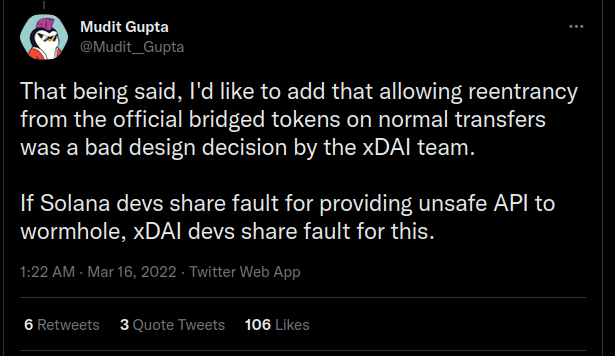Thinking a little more about this after rereading all the comments and digging a little more.
I’d also vote for a proposal with GNO only, if it was based on a better pricing approach and the premium was limited to max of 10% over and above the Agora proposal for the distribution* and locking/vesting (which would make GnosisDAO contribution to approx 61%).
Hundred finance is currently proposing a 43% premium vs Agave (in % share terms, it is higher is in $ terms with current market prices).
*The distribution value would be more compelling if it wasn’t going to so few wallets (72).
Can see a good reason why GnosisDAO might prefer to use GNO. Would like to hear from other GnosisDAO community members on their thinking about using different Treasury assets, advantages and disadvantages, and any views on associated lock/vest premium for the structure Hundred finance is proposing.
Also still no response on the process question I’ve asked about twice how this proposal works with Hundred finance DAO governance? Does Hundred finance DAO need to vote on this proposal and will it be stuck to (see below)? If so, when will that happen so we can plan accordingly?
I looked into this a little further and spotted a governance red flag  with Hundred finance. I had previously seen there was a vote for compensation for the Meter exploit by Hundred finance DAO, but what I had not noticed was that the DAO voted NO to compensation but did not meet a very high and unrealistic quorum bar, and then the team decided to override the DAOs decision and provide 51% compensation. This is a worrying development.
with Hundred finance. I had previously seen there was a vote for compensation for the Meter exploit by Hundred finance DAO, but what I had not noticed was that the DAO voted NO to compensation but did not meet a very high and unrealistic quorum bar, and then the team decided to override the DAOs decision and provide 51% compensation. This is a worrying development.
With this in mind, I feel before voting and entrusting them with a significant amount of funds, we should be confident we can understand and trust the Hundred finance DAO governance process around this proposal. We have be able to trust that Hundred finance will stick to the conditions that GnosisDAO and their own DAO approves.
We should not vote on any proposal until this is clarified. We are in the land of funny money and it can be easy to lose sight that this is a significant amount of money, and a lot of trust involved. I’m sure the Hundred finance team is good but we should not blindly trust.
Is the Hundred finance team doxxed to the Gnosis leadership? That would be reassuring, and good for peace of mind.
 with Hundred finance. I had previously seen there was a vote for compensation for the Meter exploit by Hundred finance DAO, but what I had not noticed was that the DAO voted NO to compensation but did not meet a very high and unrealistic quorum bar, and then the team decided to override the DAOs decision and provide 51% compensation. This is a worrying development.
with Hundred finance. I had previously seen there was a vote for compensation for the Meter exploit by Hundred finance DAO, but what I had not noticed was that the DAO voted NO to compensation but did not meet a very high and unrealistic quorum bar, and then the team decided to override the DAOs decision and provide 51% compensation. This is a worrying development.